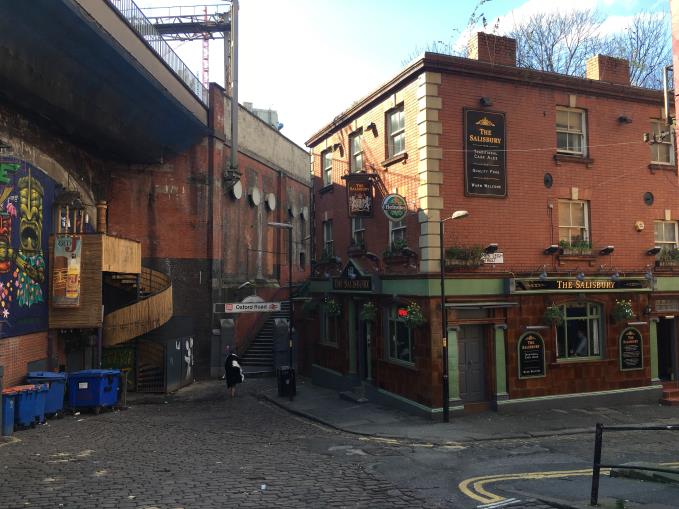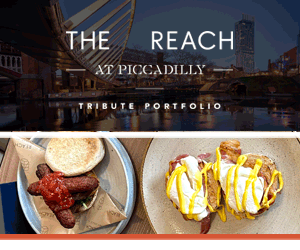I ATE an egg.
We have lost too many good buildings in recent years and many of them pubs
With salt and pepper.
It was good.
Cute almost, coming in a small paper cup, like the chef's hat of Remy the rat in Ratatouille.
I ate it with relish but also without relish as there was only salt and pepper. I drank lovely ale from Mad Hatter's Tea Party that came with rosehip, apple and spice, according to the description, which was backed up by the flavours. An egg and rosehip, apple and spice seems like a good lunch to me.
The Salisbury is a drinker's pub and I like that. There are lots of nooks and crannies, a splendid bar, a pool table and a sense of humour. There's a fine whisky selection alongside the ales - on a previous visit I'd warmed myself with a Lagavulin. It gets pleasantly full with a mixed age-group and a mixed profile of people who find the music appealing. They probably pull the odd air-guitar shape.
 Lunch
LunchThe jukebox majors in Rock. And Roll. My egg was munched to the tune of AC/DC's She's Got Balls. All together now: 'She's got style that woman/ Makes me smile that woman/ She's got spunk that woman/ Funk that woman/ She's got speed my lady/ Got what I need my babe/ She's got the ability, hey/ To make a man outta me.'
The pub sits in a curious spot that carries the whiff of Dickens. The mind's eye conjures mist and steam trains, rattling carriage wheels, canes on cobbles and jumping bass and beats. Well maybe not the latter, although you might find that belting out of the adjacent Thirsty Scholar.
The handsome tiled Salisbury sits under the shadow of a towering railway viaduct and under the brick mountain that holds up the wonderful Oxford Road Station, with an exciting set of steps connecting the two areas. It occupies the end terrace of what was a network of streets here that gained notoriety as Little Ireland, in the damp declivity of the River Irk.
 Cobbles, stairs and atmosphere
Cobbles, stairs and atmosphere The scene back up to Oxford Road in wonky panorama
The scene back up to Oxford Road in wonky panoramaFriedrich Engels, German communist and Manchester resident for almost 22 years, described the area in his 1845 book The Condition of the Working Class in England: ‘The cottages are old, dirty, and of the smallest sort, the streets uneven, fallen into ruts and in part without drains or pavements; masses of refuse, offal and sickening filth lie among standing pools in all directions; the atmosphere is poisoned by effluvia’.
The area seemed to sum up the worst of the unregulated industrial revolution, in the words of another commentator, Alexis de Toqueville, Manchester was where ‘everything in the exterior appearance attests the individual powers of Man: nothing the directing powers of Society’.
Little Ireland was largely and inadvertently ‘slum-cleared’ by the railway that now dominates The Salisbury. Oxford Road Station and the railway arches arrived in 1849 as part of the Manchester South Junction and Altrincham line destroying Engels’ broken cottages, but not without incident: three railway arches collapsed killing workmen.
There is a truncated cobbled street upon which the pub sits that collides with the back wall of the Cornerhouse building, now a department of Manchester Metropolitan University. It's an atmospheric place. A living link to Little Ireland and the nineteenth century, a reminder that to get here we came from there.
 Sign of the times
Sign of the times The good looking bar
The good looking bar That's why it's important to keep this charming streetscape and the fine pub. That's why the silence of property company Bruntwood, who have just been given the keys to redevelop the whole of this site (including The Salisbury and the Cornerhouse building), is unnerving. We have lost too many good buildings in recent years and many of them pubs. I'm thinking the Swan with Two Necks on Withy Grove, the Crown and Cushion on Corporation Street, the complex of buildings that held the Twisted Wheel/Legends club on Whitworth Street.
The last is the best analogy of what might happen around The Salisbury. Here a streetscape of nineteenth century buildings of great charm and vitality were swept aside by a monster of international inanity, Motel One. Manchester lost a little of its character with that demolition and gained nothing, except something that could be in any city anywhere.
City planners need to think about the husbandry of the city along with the need to keep the economy moving. Given the range of older buildings in the city we can have the best of both worlds if we choose. But that means sometimes turning down redevelopment, stopping the machine from rolling. In such an instance we might hold on to the physical character of the city while also gaining buildings and public areas that we can be proud of. Much has been lost needlessly, much can be saved, if there's the will and a plan and an appreciation of what makes cities interesting.
I hope Bruntwood take that into consideration and find value in the cobbles of Wakefield Street, James Leigh Street and The Salisbury, and focus redevelopment on the qualities these characterful assets can lend their plans. Bruntwood at least are one of the more careful developers, the way they have re-invented numorous sixties buildings such as the gorgeous City Tower shows they know what they are doing.
That idea of city husbandry should be high on the priority list with the Gary Neville-led consortium at Bootle Street police station too. A petition has been set up (click here) to save the Sir Ralph Abercromby pub on this site. The Abercromby is a rare remaining Georgian building, along with the Friends Meeting House, in that area, but much more importantly, it is the last witness of the Peterloo Massacre in 1819. It is, as we've written before, a physical reminder of a vital stepping stone to full British democracy. Similarly, the Salisbury is a physical reminder of Little Ireland and how unregulated development can result in terrible consequences. With many schemes in the central areas of the region it seems we're back to unregulated development, admittedly of a very different nature, without an appreciation of how the city knits together.
Again as we've written before, to demolish either pubs would be short-sighted and morally wrong. It would be embarrassing for a city as ambitious as Manchester, showing how careless we are of the context which created us.
I want to be listening to AC/DC for a good while longer in The Salisbury.
I want to return for an egg.
Come with me.
The Salisbury Pub, 2 Wakefield St, Manchester M1 5NE 0161 236 5590
Follow the campaign to preserve the area called the Oxford Road Corner here.
 Powered by Wakelet
Powered by Wakelet















